(5F20.50) Series and Parallel Light Bulbs
$0.00
Three identical light bulbs (in other words, three identical resistors) in both a parallel circuit and a series circuit are connected to an AC power outlet, which supplies the same 120 V ac voltage to each circuit.
For the parallel circuit each bulb has the full voltage drop (120 V), and the full current. The total current is the sum of the currents through each bulb.
For the series circuit the voltage across each bulb is 40 V, but the voltages sum to 120 V. The current through each bulb is correspondingly lower by a factor of three. By P=IV the power is lower by a factor of 9 if the resistance is constant. Qualitatively, this means that less current flows through bulbs in series.
The switches can be flipped on/off to see the effect of lowering/increasing the resistance of the system.

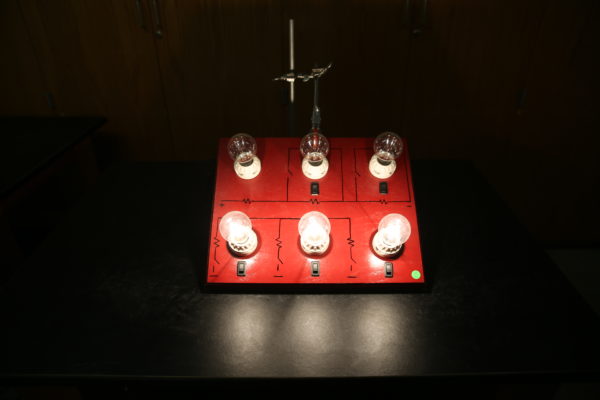
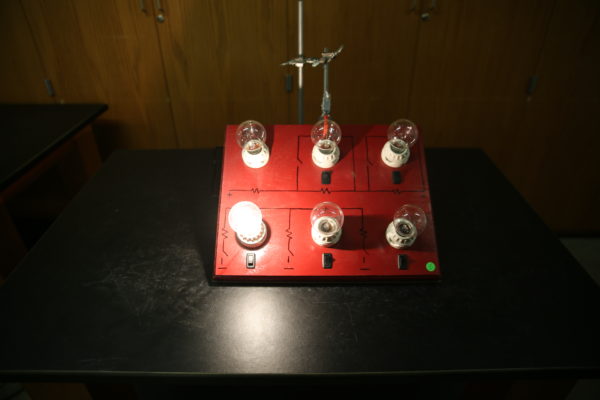
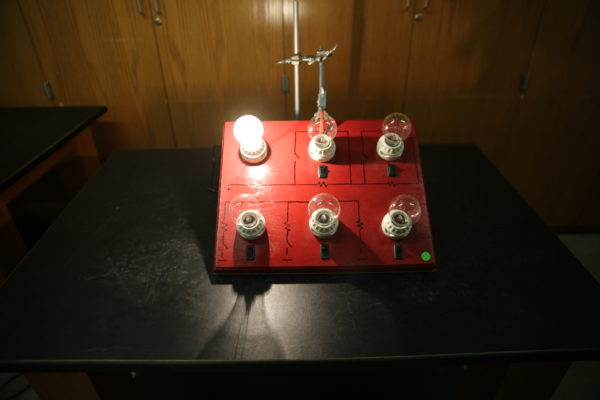

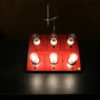
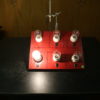
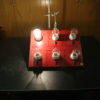

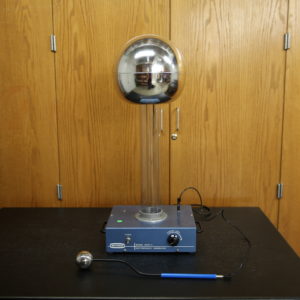
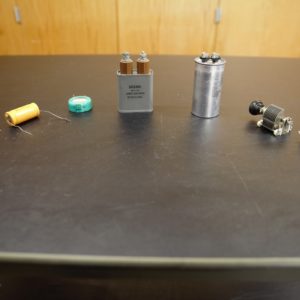

Reviews
There are no reviews yet.